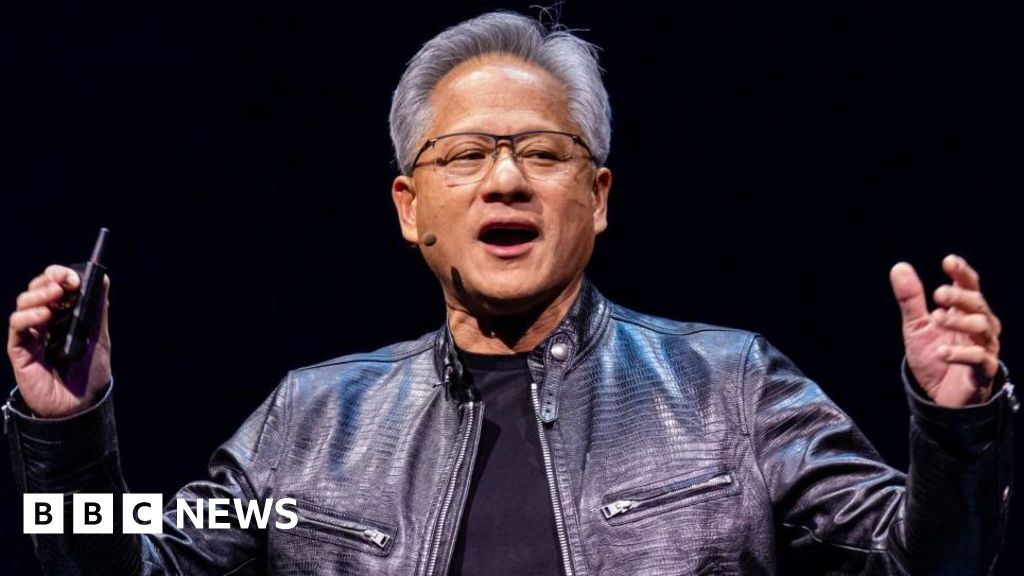Chip-maker Nvidia became the world’s most valuable company after its share price climbed to an all-time high on Tuesday.
It is now worth $3.34tn (£2.63tn), with the price having nearly doubled since the start of this year.
The stock ended the trading day at nearly $136, up 3.5%, making it more valuable than fellow tech giant Microsoft. It overtook Apple earlier this month.
The Californian company’s meteoric rise has been fuelled by its dominance of what analysts Wedbush Securities have called the “new gold or oil in the tech sector” – the chips needed for artificial intelligence (AI).
“We believe over the next year the race to $4 trillion market cap in tech will be front and center between Nvidia, Apple, and Microsoft,” it said a note earlier this week.
Other analysts though have questioned whether there will be big future gains, given the increasing competition Nvidia faces.
What is not in doubt though is how spectacularly it has grown.
Eight years ago, the stock was worth less than 1% of its current price.
Back then, Nvidia’s value came from its competition with rival AMD, in a race to make the best graphics cards.
In recent years though it has benefited from a boom in demand for chips that train and run generative AI models, the most well known of which being OpenAI’s ChatGPT.
The firm also benefitted significantly from a rush to mine Bitcoin in 2020, which saw a sharp uptick in sales of its graphics cards.
The rise and rise of the tech giant has been mirrored by the increasingly high profile of its boss, Jensen Huang.
Some have dubbed the 61-year-old electrical engineer the “Taylor Swift of tech” for the celebrity status he has achieved.
Competition among AI developers is fierce. Microsoft, Google-owner Alphabet, Meta and Apple are just some of the tech heavyweights battling to create a world-beating product.
This competition benefits Nvidia, which as well as developing AI tech of its own, dominates the vast majority of the AI chip market.
Nvidia’s sales and profit figures have surpassed many analyst expectations in recent years.
In May, after its latest set of financial results were published, Quilter Cheviot technology analyst Ben Barringer said the company had “once again cleared a very high hurdle”.
“Demand is showing no signs of switching off either,” he added.
However, a minority are more cautious.
In February, Barclays credit analyst Sandeep Gupta argued that Nvidia’s large market share would be hard to maintain given the increasing number of rivals and questioned how Nvidia’s customers would monetise AI software.
